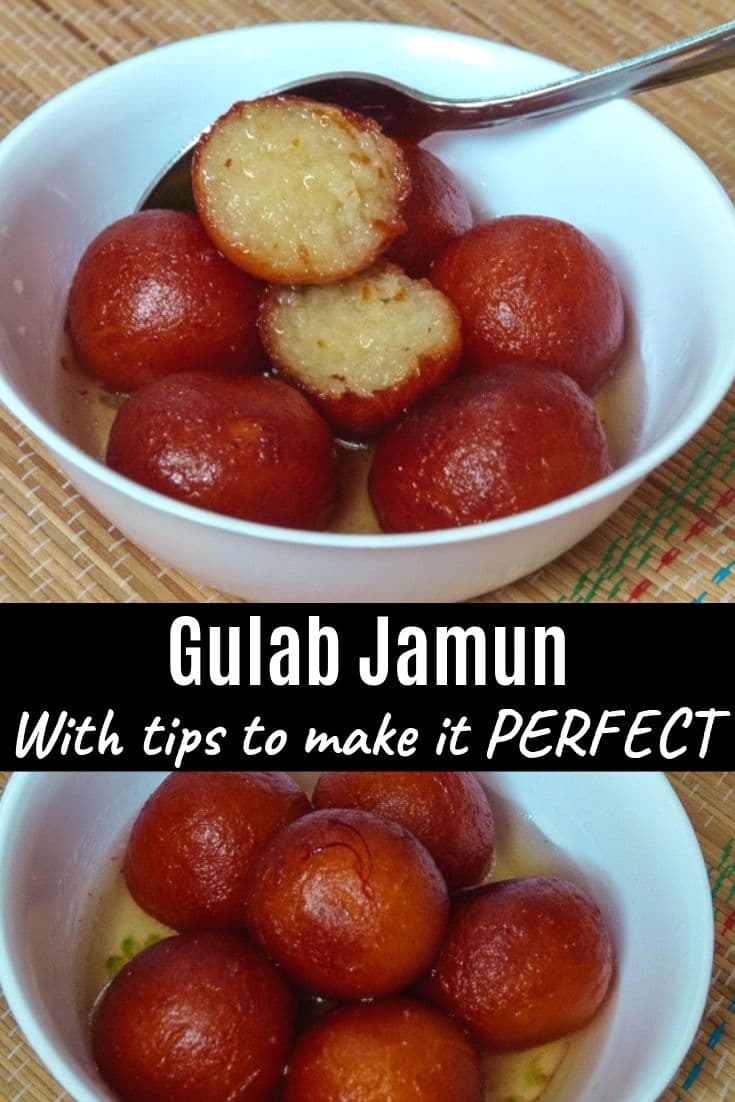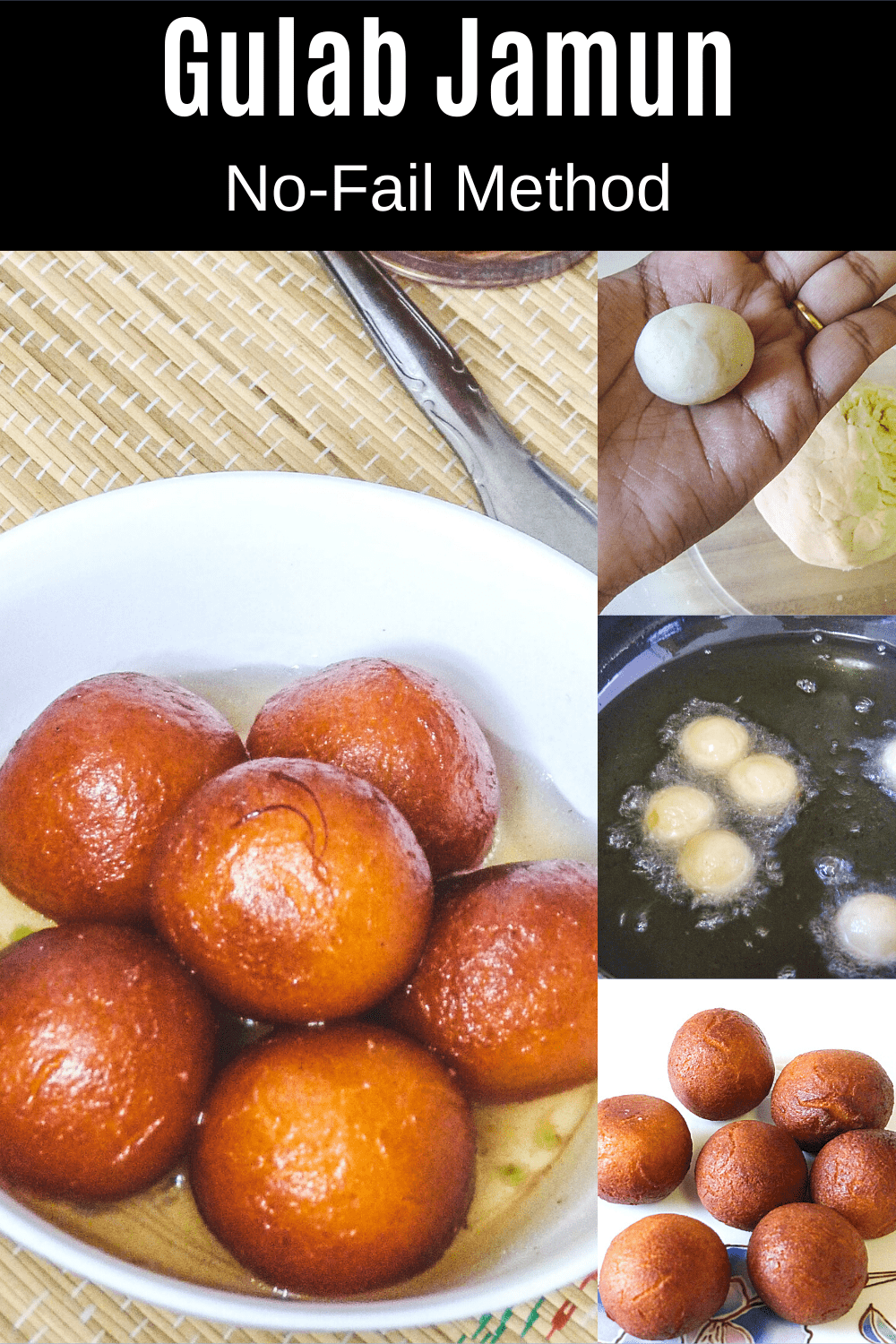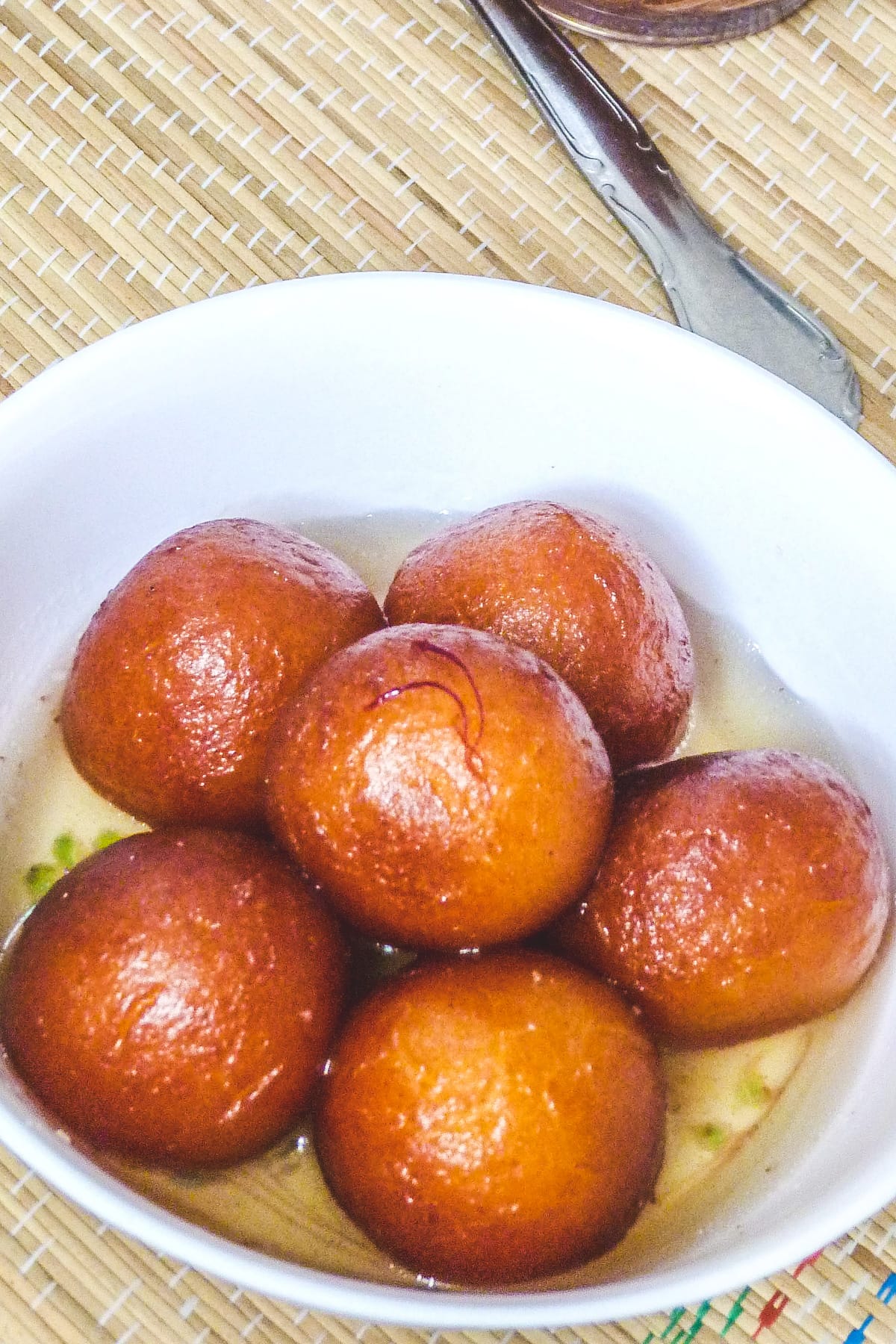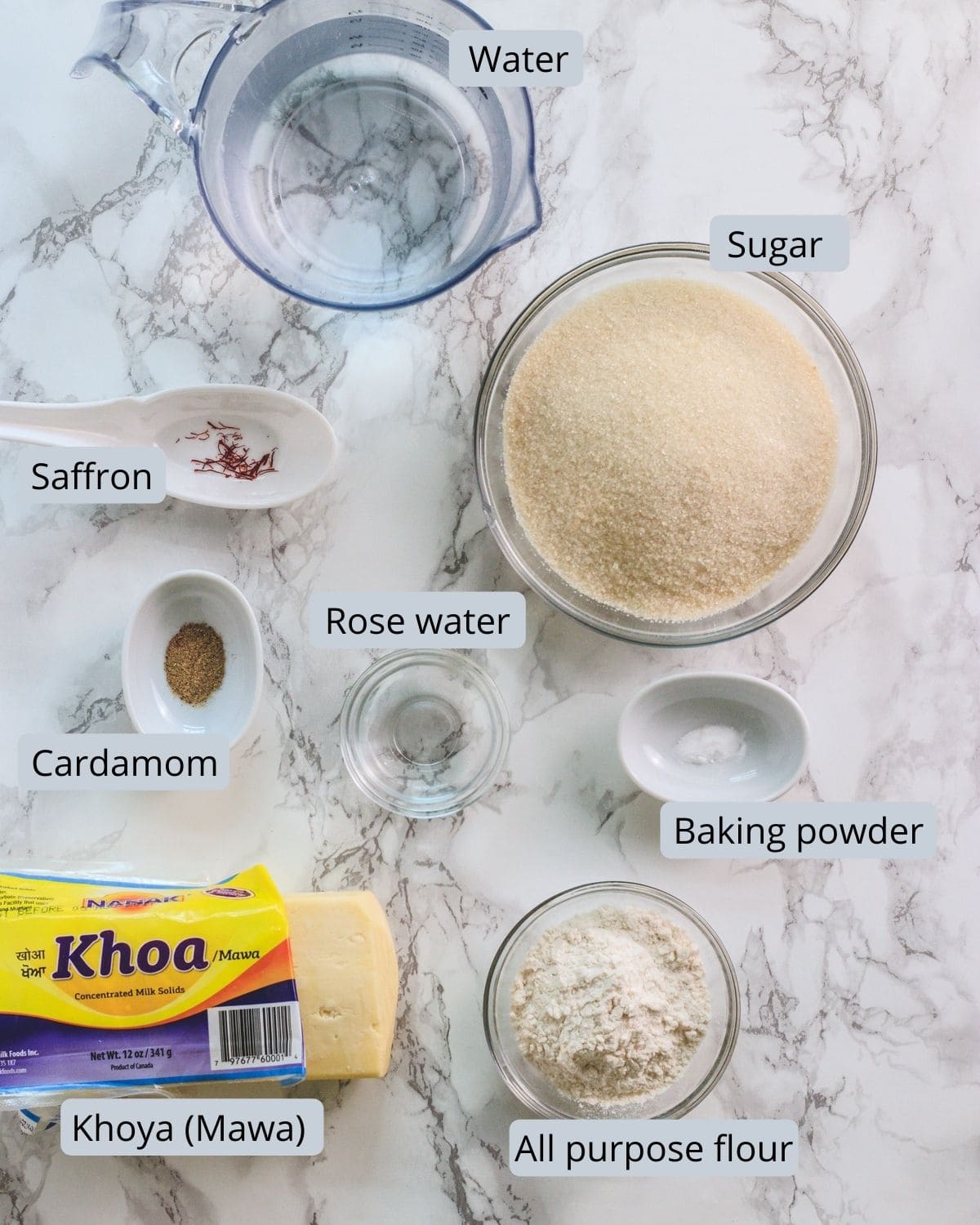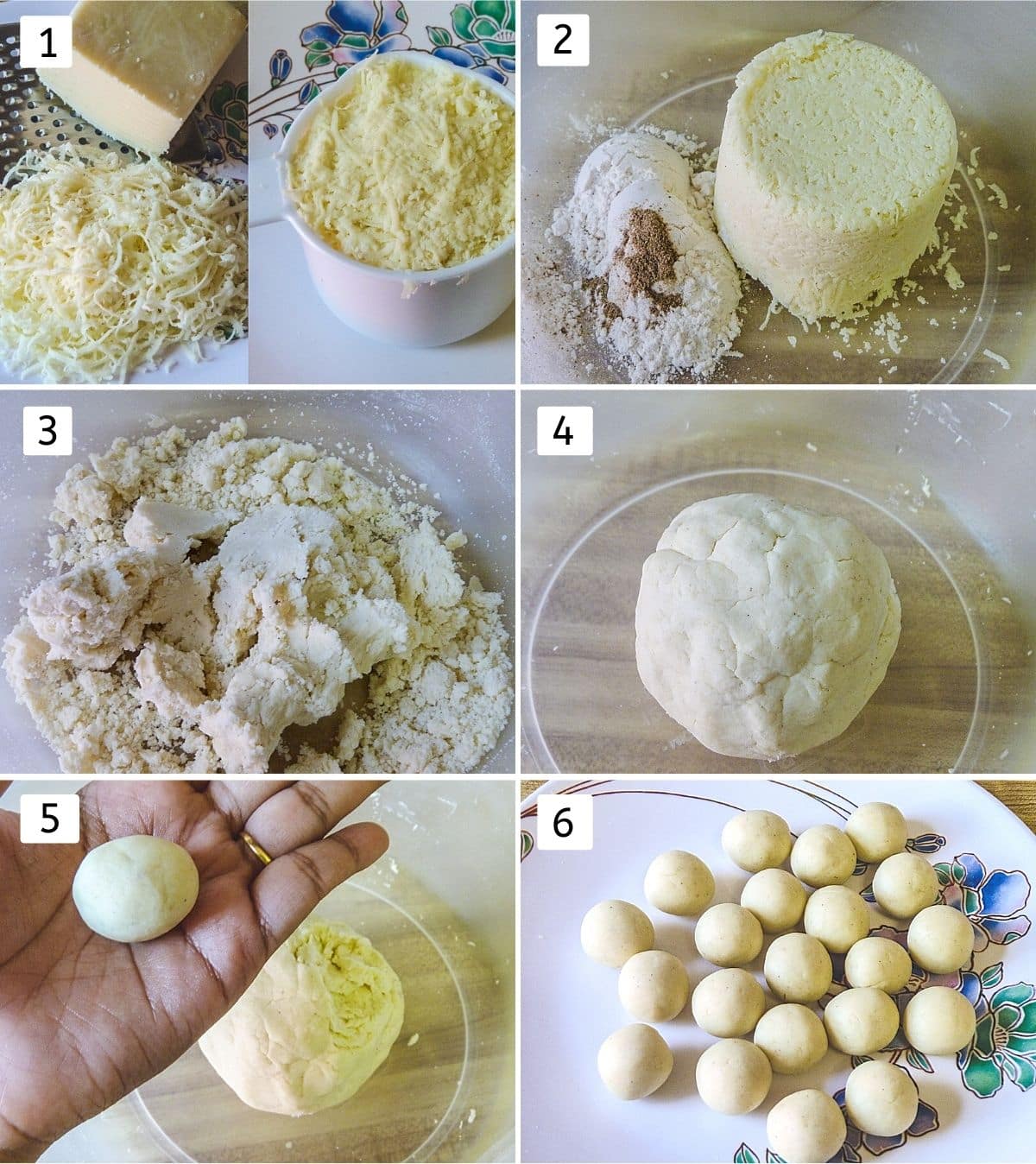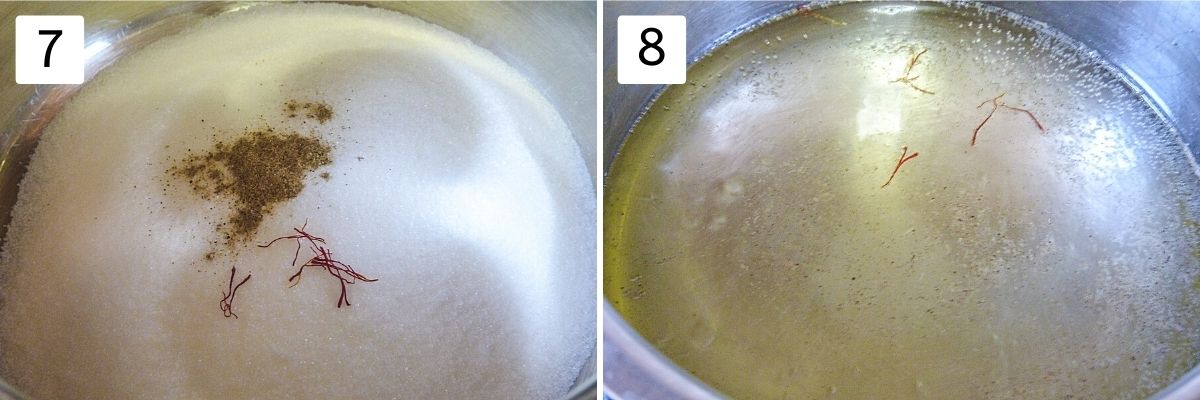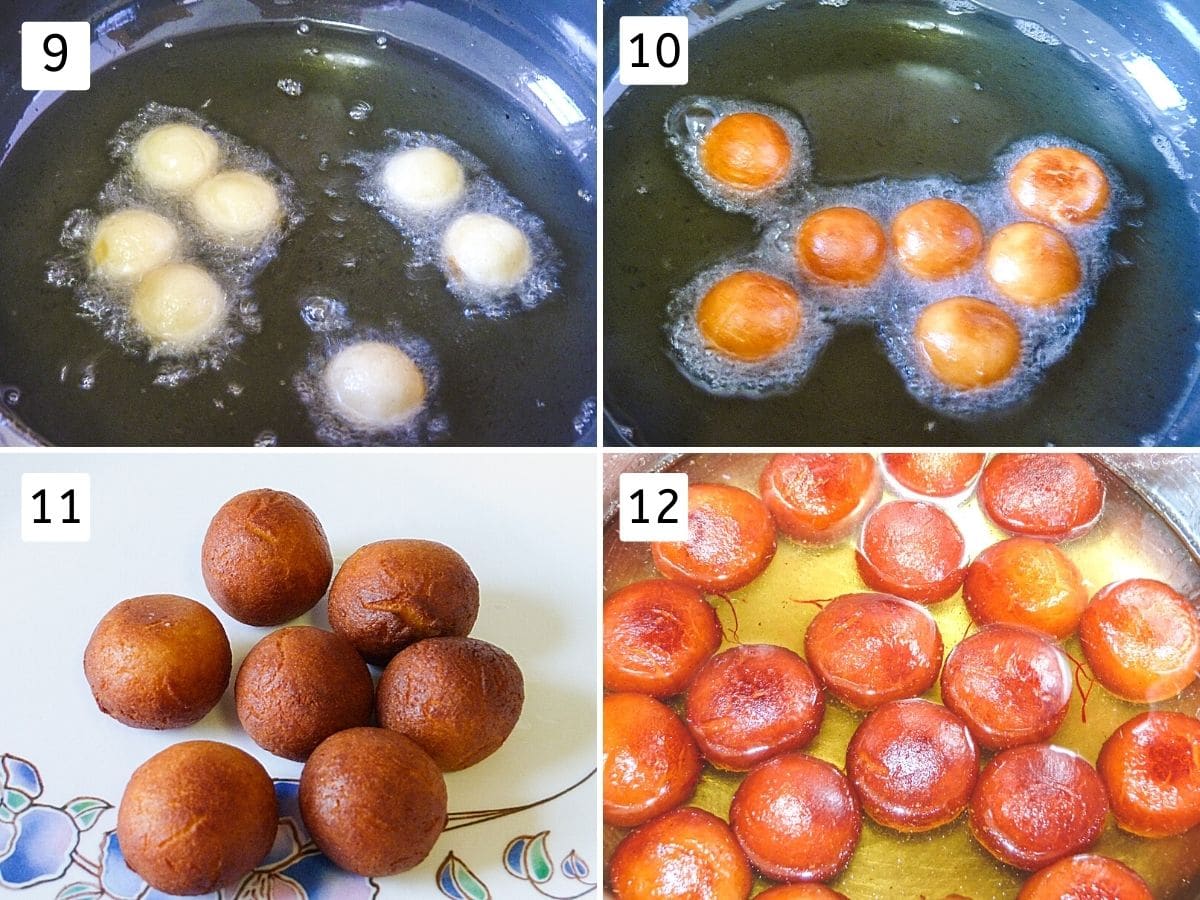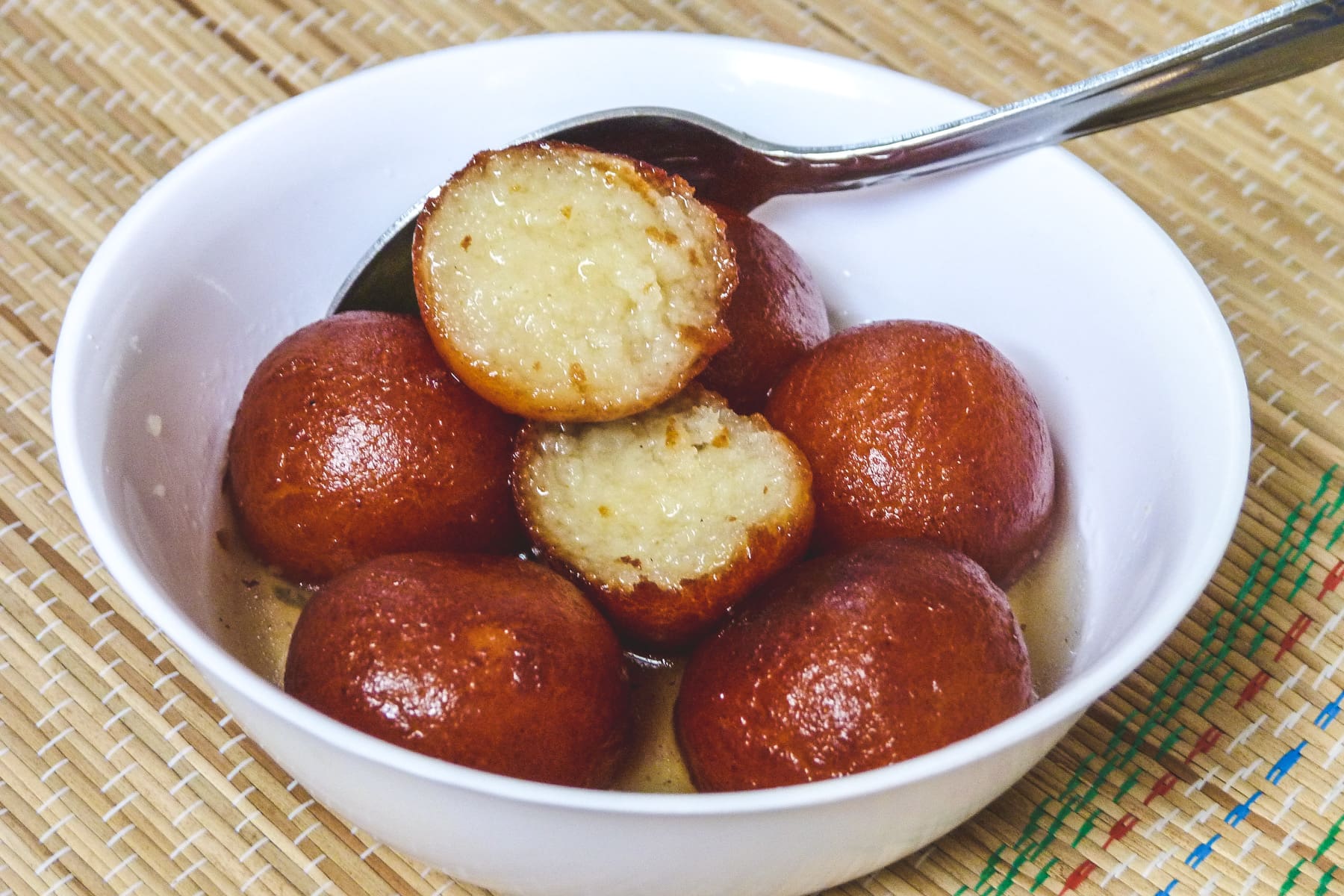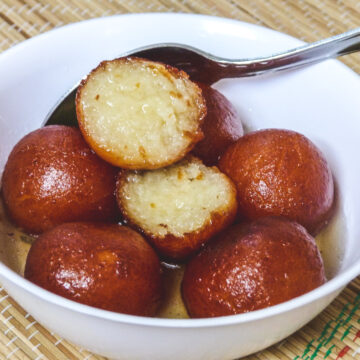I am sharing the traditional method where gulab jamun is made with khoya (mawa). Also, sharing all the tips and tricks to perfecting them.
What Is Gulab Jamun?
Gulab jamun is one of the popular Indian sweets where milk solid balls are deep fried and soaked into the saffron, cardamom, rose flavored sugar syrup. During the soaking time, balls will absorb some syrup and become soft and juicy. Have you ever wondered why this dessert called gulab jamun? Gulab=Rose. The sugar syrup is flavored with rose water hence the word ‘Gulab’. Jamun=Indian black plum (fruit). The shape and texture of the balls are similar to the black plum hence the word ‘Jamun’. Traditional gulab jamun are made with khoya while there is another version where gulab jamun are made with milk powder. This recipe is handy when khoya is not easily available. Gulab jamuns are often made during festivals like Holi, Diwali, Eid, Raksha bandhan or any special occasion. Many people buy these sweets from the mithai shop but I always prefer to make them at home. So I know first, quality ingredients are used and second, made with hygiene and cleanliness.
🧾 Ingredients
Here is the pic of ingredients used in making this best gulab jamun recipe. You’ll need 8 ingredients (including water). Plus, you also need ghee or oil for deep frying (not shown in the pic). The main ingredient is khoya.
Khoya: In India, it is easily available the fresh khoya from your local dairy shop. But here in the USA, you’ll find the refrigerated (or frozen) khoya next to the dairy section in any Indian grocery store. All purpose flour: It work as a binding agent while shaping balls. Cardamom powder: Green cardamom is crushed lightly to open up and remove the outer covering. Then crush the seeds into powder using mortar and pestal. Rose water: It gives a nice aroma and fresh flavor. Saffron: It give a unique flavor to the syrup. It is optional though.
👩🍳 How To Make Gulab Jamun? (Stepwise Photos)
Making Gulab Jamun Dough & Balls:
- If using frozen khoya then defrost it before your work forward. Grate it and measure by tightly packing into the cup.
- Take khoya, all purpose flour, cardamom and baking powder in a bowl.
- Mix well and as you pinch the mixture, it should start to come together.
- Using frozen khoya, like me then add a teaspoon of water at a time and gather it make a firm dough ball. Do not knead, just gather.– Using fresh khoya: it might have more moisture then mine (frozen). In that case no need to add water. If the mixture is too soft and loose then you may need to add a little more flour and mix.In short, adjust the water and flour amount as needed depending on your khoya type.
- Now divide into 22 equal portions and make smooth balls (crack-free).
- Cover with the clean kitchen towel to avoid drying. Making Sugar Syrup:
- Take sugar, cardamom, saffron and water in a wide & deep saucepan. Turn the heat on medium.
- Once the syrup starts boiling, let it simmer for 4-5 minutes only. Turn off the stove and add rose water. We are looking for sticky simple syrup (no thread consistency). Frying and Soaking Into The Syrup:
Heat the oil/ghee in a pan on MEDIUM-LOW heat for frying. Traditionally ghee is used which gives a rich taste. Oil also works fine. Oil should be just hot. Not too hot like we do for pakora. Try checking by adding a small portion in the oil. It stays at the bottom of the pan for a few seconds and then comes on top steadily, meaning the oil is perfect for frying. If the added dough comes on top quickly meaning the oil is too hot. Add one ball first and see. If it breaks while frying, add a little more flour in the dough and make balls again.
- Add a few balls into the oil.
- Once it starts to have tiny golden spots on them, keep turning and moving around for even frying. Fry till they are golden brown in color. During the frying process adjust the gas heat to keep the oil temperature consistent and make sure it does not get too hot otherwise you will have a raw lump in the center of the ball.
- Once fried remove them in the plate and fry rest. One batch will take around 7-8 minutes. Once fried all of them let it cool for 5 minutes only. Do not add hot, fried jamun in the syrup, let it cool slightly and then add.
- Now the sugar syrup may get cold. So just warm it up. And then add gulab jamun in the syrup. Jamun will float in the syrup. If they sink in the bottom meaning they are not fried properly, they are heavy and dense or they are raw from inside. Let it sit for 3-4 hours, during this time they will soak up some syrup and will get slightly bigger in size.
💭Expert Tips To Make Perfect Gulab Jamun
🥣 Storage Instructions
At room temperature – it stays fresh for 1-2 days depending on the climate/weather where you live. In the refrigerator – it stays good for a week or two when stored in an airtight container. In the freezer – gulab jamuns can be frozen and stays good for up to 4 months
🍽 Serving Ideas
Gulab jamun can be served warm or chilled or at room temperature. It’s a personal preference. To serve warm, reheat in the microwave for a few seconds. Enjoy this gulab jamun as a dessert after a meal or along with your meal. Drain the syrup, cut the balls into half. Arrange them on a serving platter. Top with rabdi and garnish with sliced almonds. Instead of rabdi, you can use whipped cream. Drain the syrup, roll the balls into desiccated coconut or nuts powder then arrange on the platter. Or top the balls with chocolate sauce or chocolate ganache and garnish with pistachios.
Now, we learned how to make gulab jamun. Let’s go through some troubleshooting questions. If you have read the steps above and followed them carefully, I am sure you won’t run into any issues. But just in case, if you need some answers.
Measure the baking powder with measuring spoon, do not eyeball. An excessive amount can make them disintegrate while frying. Do not knead the dough. Just mix and gather into a big ball. Use the grated khoya (not crumbled). Crumbled khoya has large granules and to make it smooth dough, you might accidentally knead the dough too much and you’ll end up with tough gulab jamuns. Water and flour quantity may vary depending on what kind of khoya you are using. If using frozen, then it is dry, you’ll need water. If using fresh and it has enough moisture, no need to add water; you may need little extra flour if it has too much moisture.
Make all the balls of the same size. So they fry evenly at the same time. Make sure the balls are smooth (without any cracks and wrinkles) otherwise it will get break while frying. You must keep them covered with a kitchen towel to avoid drying out.
Just make sticky syrup. No need to looks for thread consistency. So for that just simmer for 4-5 minutes after it comes to a boil. Don’t make the syrup too thick otherwise, jamun won’t absorb the syrup. Don’t worry if it looks thin after cooking, as it cools down it becomes thick.
The oil/ghee has to be JUST hot. (not super hot like frying pakoras). Fry on medium-low heat. If fried on medium to high heat them it stays raw from the center and it becomes hard. How do you know that oil/ghee temperature is right for frying jamun balls? – Try checking by adding a small portion into the oil/ghee. It stays at the bottom of the pan for some time and then comes on top steadily, meaning it is perfect for frying. If the added dough comes on top quickly meaning it’s too hot. Frying one batch takes some time since we are frying on medium-low heat. So be patient.
Add jamuns to the warm syrup (not hot, not room temperature). If added to a hot syrup then it may lose shape and become flat. If added to a cold syrup then jamun will not absorb the syrup. Do not add oil dripping jamuns into the syrup. Remove fried jamun into a plate, let them cool for few minutes and then add into the warm syrup. Don’t be in a rush. Let the jamun rest in the syrup for about 3-4 hours, let them get a chance to soak up the syrup. Then enjoy.
Troubleshoot
PS Tried this recipe? Please leave a star rating in the recipe card below and/or a review in the comment section. I always appreciate your feedback! Plus, follow along on Pinterest, Instagram, and Facebook for all the latest updates.
Kaju katli Phirni Kalakand Rasgulla Rasmalai
